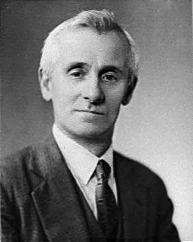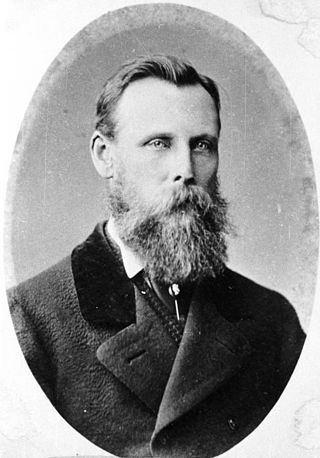
William Donald Stuart MacDonald was a New Zealand politician, Cabinet Minister, and briefly Leader of the Opposition.

Joseph Ivess was a member of the New Zealand House of Representatives. He had an association with a large number of newspapers.

East Coast is a New Zealand parliamentary electorate, returning one Member of Parliament to the New Zealand House of Representatives. The electorate first existed from 1871 to 1893, and was recreated in 1999. The current MP for East Coast is Dana Kirkpatrick of the National Party, who has held office since 2023.

Thomas Bannatyne Gillies was a 19th-century New Zealand lawyer, judge and politician.

William Douglas Lysnar, known as Douglas Lysnar, was a New Zealand politician of the Reform Party.

Peter Neilson was a New Zealand politician of the Labour Party.
Western Maori was one of New Zealand's four original parliamentary Māori electorates established in 1868, along with Northern Maori, Eastern Maori and Southern Maori. In 1996, with the introduction of MMP, the Maori electorates were updated, and Western Maori was replaced with the Te Tai Hauāuru and Te Puku O Te Whenua electorates.

Wiremu "Wi" Pere, was a Māori Member of Parliament in New Zealand. He represented Eastern Māori in the House of Representatives from 1884 to 1887, and again from 1893 to 1905. Pere's strong criticism of the government's Māori land policies and his involvement in the turbulent land wars in the 1860s and 1870s made him a revered Māori leader and he was known throughout his career as an contentious debator and outstanding orator in the use of the Māori language.
The Gisborne Herald is the daily evening newspaper for Gisborne and environs. It is one of only four independently owned daily newspapers in New Zealand.

William Crowther was a Mayor of Auckland and then Member of Parliament for Auckland, New Zealand.

William Lee Rees was an English-born New Zealand cricketer, politician and lawyer.
Samuel Locke was a 19th-century Member of Parliament from the Gisborne Region of New Zealand.
Andrew Graham was a 19th-century Member of Parliament from the Gisborne Region of New Zealand.
Gisborne District Council is the unitary authority for the Gisborne District of New Zealand. The council consists of a mayor and 13 ward councillors. The district consists of the city of Gisborne and a largely rural region on the east coast of the North Island.

Thomas William Porter was a New Zealand soldier and land purchase officer.

Sir Harry Heaton Barker was a New Zealand newspaper journalist and editor, local politician, and founder of the Four Square supermarket chain. He was mayor of Gisborne for 27 years.
Gordon John Robertson, sometimes known as Jack Robertson, was a New Zealand cricketer. He played eleven first-class matches for Otago between the 1937–38 and 1940–41 seasons.

Jas J Niven & Co Limited later Niven Engineering, was a New Zealand engineering business based in Wellington with operations throughout the country. The foundry that became Niven's business was established in Napier in 1866.
The 1920 Bay of Plenty by-election was a by-election held in the Bay of Plenty electorate in the Bay of Plenty during the term of the 20th New Zealand Parliament on 30 September 1920.
The Mayor of Wairoa officiates over the Wairoa District of New Zealand's North Island.












